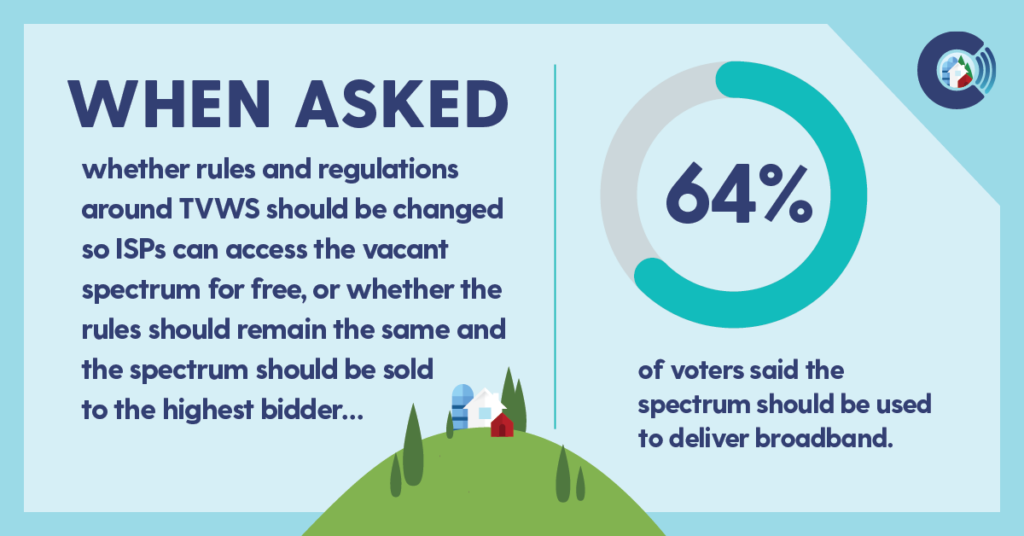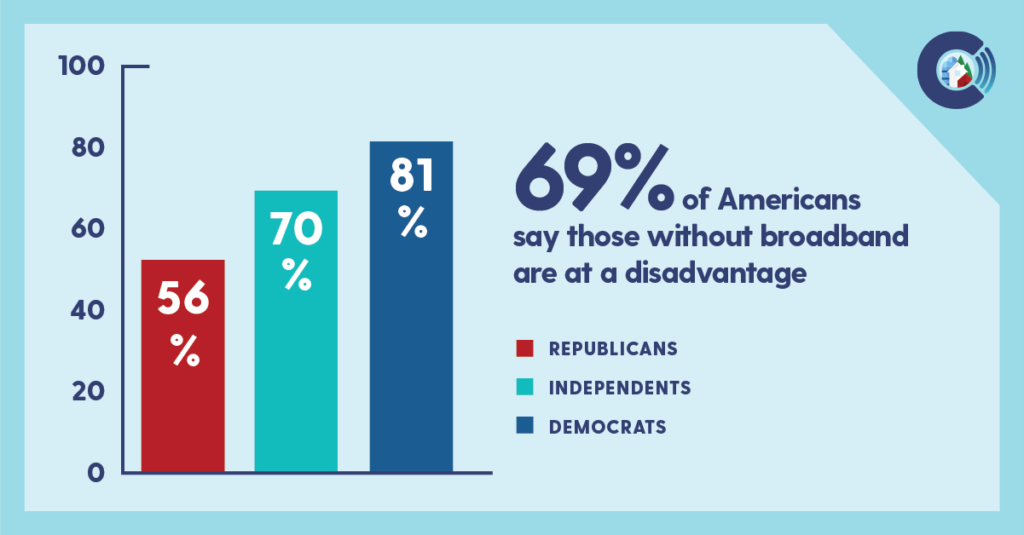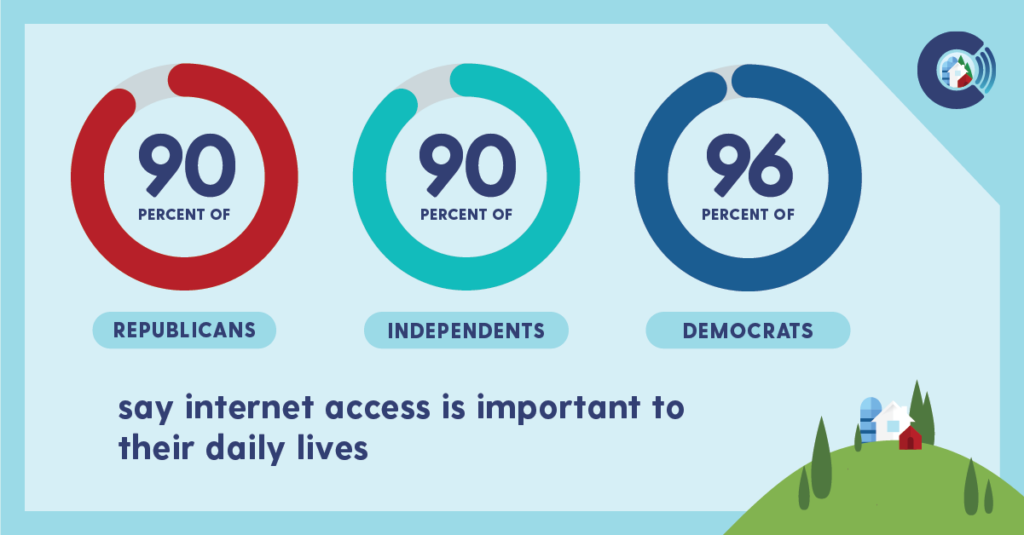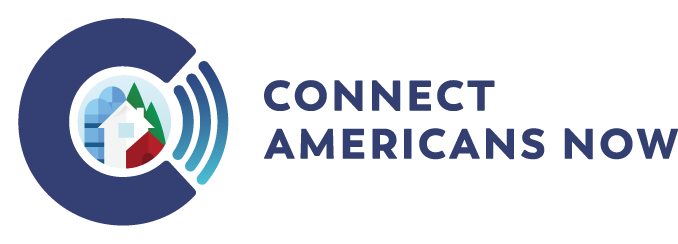Connect Americans Now Rural Broadband Poll
At Connect Americans Now, we hear from frustrated voters about the digital divide nearly on a daily basis. A mom in Indiana who takes her children to McDonald’s so they can do their homework; a farming family in Kansas that is unable to take advantage of precision agriculture tools; a patient who relies on telemedicine to receive treatment and contact her doctors.
All too often though, these voices are left out of the policy debate in Washington. That’s why Connect Americans Now released a poll on rural broadband today. We want to know how Americans really feel about this issue, and the results were extremely telling.
Nearly three in four voters believe expanding rural broadband access would have a positive impact on the nation’s economy, but 66 percent believe that policymakers in Washington have not done enough on the issue. The survey also revealed that 85 percent of voters believe improving rural broadband connectivity would have a positive impact for those on the wrong side of the digital divide.
A frustration with Washington and an understanding of the importance of bridging the digital divide were not news to us – we hear this all the time. But we were also encouraged with the fact that, when presented with the issue, 64 percent of voters said that TV white spaces spectrum (TVWS) should be available for broadband deployment.
If you fall in line with the majority of Americans who support TVWS and are frustrated with Washington’s response to the digital divide, join our fight to make policymakers take action. You can use our action center to send a message to your representation in Congress and the Federal Communications Commission, or you can share your story about how the digital divide has impacted you.
Other findings in the survey included:
Americans broadly agree that TV white spaces (TVWS) spectrum should be available for local providers to deploy broadband to rural areas:

- When explained what TVWS are and asked whether the vacant spectrum should be sold to the highest bidder or available for local providers to deploy rural broadband, 64 percent of voters believed it should be available for broadband, and only 11 percent said it should not be.
- Of this dataset, 58 percent of Republicans, 66 percent of independents and 71 percent of Democrats agreed that TVWS should be used for broadband deployment.
- When asked whether there should be a clear set of rules surrounding TVWS, or whether the regulations should be left the way they are, 55 percent of voters said there should be a clear set of rules, while 25 percent said they should be left the way they are.
Voters understand the importance of expanding rural broadband connectivity and are frustrated with Washington’s response to the digital divide:

- 69 percent of voters agree that Americans without broadband are at a “disadvantage.”
- 69 percent of voters agree that improving broadband access for rural Americans is important to growing the economy.
- This question crossed party lines with 62 percent of Republicans, 68 percent of independents and 76 percent of Democrats agreeing.
- By more than a two-to-one margin, Americans believe that federal regulators are making it too difficult for local and regional providers to build networks in remote and rural areas.
- When asked whether policymakers in Washington cared about expanding rural broadband connectivity, 66 percent of voters responded no.
- When asked whether they agree or disagree that Congress and Federal regulators need to do more to connect rural America, 72 percent of voters agreed.
Internet access is as important as ever:

- 92 percent of respondents said internet access was important to their daily lives, with 53 percent classifying it as “extremely important.”
- 88 percent of voters said that it was important to have high-speed broadband, as opposed to a connection that was too slow to perform basic tasks like video streaming.
- 58 percent of respondents ages 18-24 report watching television through streaming services, as opposed to 48 percent of respondents ages 35-44, 42 percent of voters 45-54, 29 percent of voters 55-64 and 21 percent 61 and older.

